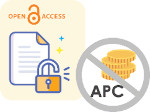Fatigue and excessive daytime sleepiness in medical internship students at a private college
DOI:
https://doi.org/10.61661/congresso.cbmev.6.2023.28Keywords:
fatigue, excessive daytime sleepiness, medical internship, medical students, lifestyleAbstract
Introduction: The Medicine course is highly demanding in both academic and practical terms, especially during internship. In this context, fatigue and Excessive Daytime Sleepiness (EDS) are phenomena that must be investigated within the scope of medical education as they are present in the academic life of interns. Objective: To investigate the levels of fatigue and EDS in inmates, as well as to analyze the sociodemographic factors associated with these phenomena. Method: This is a quantitative analytical cross-sectional study, covering students from the 9th to the 12th semesters of Medicine at a private college. The Fatigue Assessment Scale (EAF), the Epworth Sleepiness Scale (ESE) and a sociodemographic questionnaire were applied. Data collection took place in the 2nd semester of 2022 and early 2023. Results: 254 medical interns participated, leaving 239 after exclusion criteria. Regarding the EAF, it was observed that the scores varied between 15 and 45, with an overall average of 31.5 out of a total of 50 points. Variables such as female gender, diagnosis of psychiatric illness, difficulty sleeping, use of substances that affect sleep, never practicing physical activity, being in the 9th period, dissatisfaction with academic performance, absence of a preparatory course for residency and beginning of university studies residence in the 12th period showed an association with fatigue. Regarding the ESE analysis, EDS was identified in 92 students (38.5%). Associated variables include female sex, diagnosis of psychiatric illness, participation in social groups, dissatisfaction with academic performance and not taking a preparatory course for residency. Conclusion: Significant associations (p ≤ 0.05) were found between some sociodemographic variables in relation to increased fatigue and the diagnosis of EDS in inmates.
References
ABDALI N; NOBAHAR M; GHORBANI R. Evaluation of emotional intelligence, sleep quality, and fatigue among Iranian medical, nursing, and paramedical students: A cross-sectional study. Qatar Medical Journal, v.15, 2019. Disponível em: http://doi.org/10.5339/qmj.2019.15. Acesso em: 30/08/2023. DOI: https://doi.org/10.5339/qmj.2019.15
AL-ZAHRANI, J.M. et al. Daytime sleepiness and academic performance among Arab medical students. J Thorac Dis, Saudi Arabia, v. 8, n. 2, 2016. Disponível em: https://www.ncbi.nlm.nih.gov/pmc/articles/PMC4739953/pdf/jtd-08-02-AB006.pdf. Acesso em: 30/08/2023.
BERTOLAZI, A.N. et al. Validação da escala de sonolência de Epworth em português para uso no Brasil. J Bras Pneumol, Brasília, v. 35, n. 9, 877-883, 2009. Disponível em: https://doi.org/10.1590/S1806-37132009000900009. Acesso em: 30/08/2023. DOI: https://doi.org/10.1590/S1806-37132009000900009
COSTA, L.D.M. et. al. Qualidade do sono e fatores associados em acadêmicos de Medicina: revisão integrativa. Arch Health Invest (2021)10(9):1372-1377. Disponível em: https://doi.org/10.21270/archi.v10i9.5353. Acesso em: 30/08/2023. DOI: https://doi.org/10.21270/archi.v10i9.5353
EL HANGOUCHE, A.J. et al. Relationship between poor quality sleep, excessive daytime sleepiness and low academic performance in medical students. Adv Med Educ Pract, v. 9 631–638, 2018. https://doi.org/10.2147/AMEP.S162350 DOI: https://doi.org/10.2147/AMEP.S162350
GOUVEIA, V.V, et al. Escala de avaliação da fadiga: adaptação para profissionais da saúde. Revista Psicologia: Organizações e Trabalho, Santa Catarina, v. 15, n. 3, 246-256, 2015. http://doi.org/10.17652/rpot/2015.3.594 DOI: https://doi.org/10.17652/rpot/2015.3.594
HUANG, C.F. et al. Determinants of daytime sleepiness in first-year nursing students: a questionnaire survey. Nurse Educ Today, v. 34, n. 6, 1048–1053, 2014. Disponível em: https://doi.org/10.1016/j.nedt.2013.11.005. Acesso em: 30/08/2023. DOI: https://doi.org/10.1016/j.nedt.2013.11.005
LIMA, A.M. et al. Correlação entre distúrbios do sono e avaliação cognitiva em estudantes de medicina. Iniciação Científica Cesumar, Paraná, v. 18, n.1, 5-13, 2016. Disponível em: https://doi.org/10.17765/1518-1243.2016v18n1p5-13. Acesso em: 30/08/2023. DOI: https://doi.org/10.17765/1518-1243.2016v18n1p5-13
MICHIELSEN HJ; De Vries J; Van Heck GL. Psychometric qualities of a brief self-rated fatigue measure: The Fatigue Assessment Scale. J Psychosom Res, v. 54, n. 4, 345-52, 2003. https://doi.org/10.1016/s0022-3999(02)00392-6. - PMID: 12670612. DOI: https://doi.org/10.1016/S0022-3999(02)00392-6
MICHIELSEN, H.J. et al. Examination of the dimensionality of fatigue: The construction of the Fatigue Assessment Scale (FAS). European Journal of Psychological Assessment, local, v. 20, n. 1, 39-48, 2004. http://doi.org/10.1027/1015-5759.20.1.39 DOI: https://doi.org/10.1027/1015-5759.20.1.39
MURRAY, J.W. A New Method for Measuring Daytime Sleepiness: The Epworth Sleepiness Scale. Sleep, [Australia], v. 14, n. 6, 540--545, 1991. https://doi.org/10.1093/sleep/14.6.540 DOI: https://doi.org/10.1093/sleep/14.6.540
RODRIGUES, R.N. et al. Daytime sleepiness and academic performance in medical students. Arq Neuropsiquiatr, São Paulo, v. 60, n. 1, 6–11, 2002. https://doi.org/10.1590/S0004-282X2002000100002 DOI: https://doi.org/10.1590/S0004-282X2002000100002
VAZ, A.L.L. et al. Fatores associados aos Níveis de Fadiga e Sonolência Excessiva Diurna em Estudantes do Internato de um Curso de Medicina. Revista Brasileira de Educação Médica, Brasília, v. 44, n. 1, e011, 2020. https://doi.org/10.1590/1981-5271v44.1-20190150 DOI: https://doi.org/10.1590/1981-5271v44.1-20190150

Downloads
Published
How to Cite
Issue
Section
License
Copyright (c) 2023 Isa Cerchi Arruda, Beatriz Costa do Nascimento, Júlia Cera Scotá Moreira, Douglas Ferreira Vilas Boas, Lúcia Helena Sagrillo Pimassoni , Marcela Souza Lima Paulo

This work is licensed under a Creative Commons Attribution 4.0 International License.
The VI Brazilian Congress of Lifestyle Medicine allows the author(s) to maintain their copyright without restrictions. Publications are licensed under the Creative Commons Attribution 4.0 International License - CC-BY


